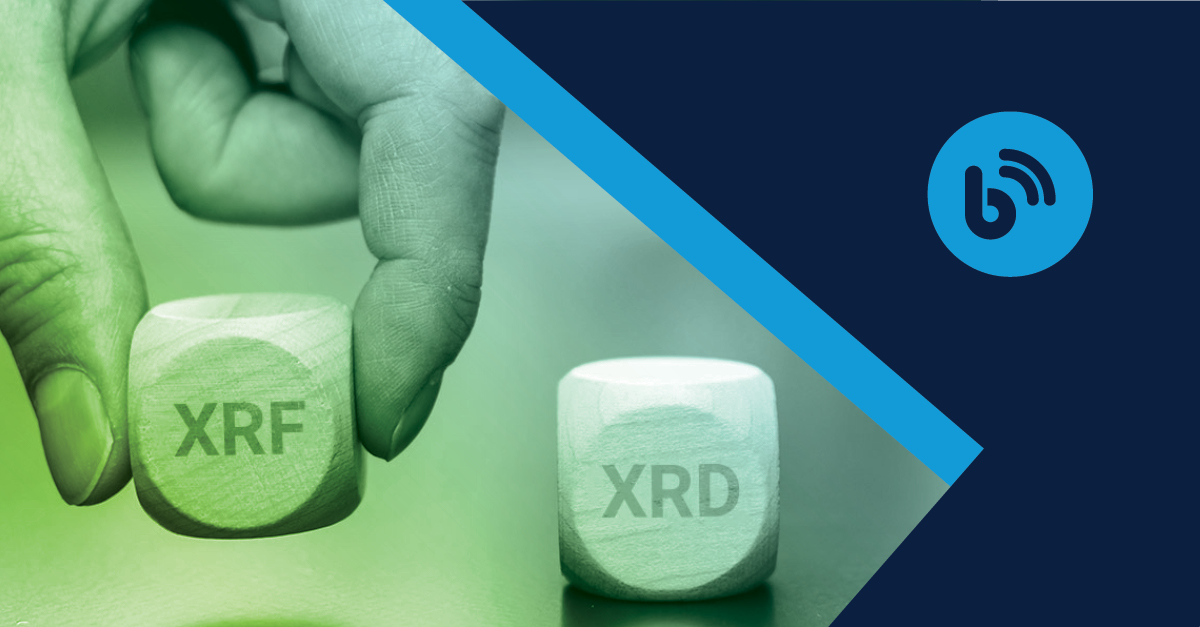What is the Difference Between XRF and XRD?
Jul 10, 2025

Have you ever wondered about the difference between XRF (X-ray fluorescence spectrometers) and XRD (X-ray diffractometers), or which one to use for certain applications and why? If so, you're not alone. These two analytical techniques both use X-rays and often cause confusion, especially for those new to material analysis.
The terminology is confusing. Even with years of experience using different X-ray techniques, I also had similar questions at the beginning. If you wonder about the difference between radiography and CT, this article is for you. It will help you discover which X-ray imaging technique is best for your needs.
- Differences between XRF and XRD
- Principles of XRF and XRD
- How XRF works
- When to use XRF
- How XRD works
- When to use XRD
- Differences in sample preparation
- Differences in detection limits
- Differences in instrument costs
- Takeaway
1. Differences between XRF and XRD
The most prominent difference between XRF and XRD from a materials analysis point of view is that XRF identifies and quantifies elements in both crystalline and non-crystalline materials. Crystal structures do not affect the XRF results. In contrast, XRD identifies and analyzes crystalline materials based on their crystal structures or atomic arrangements. Changes in elemental compositions affect the XRD results very little unless they consequently change the crystal structures. In short, XRD gives molecular information and XRF gives elemental information.
For example, to identify and quantify the amount of sulfur in diesel fuel, you need XRF because XRD can’t tell you much about a liquid sample or identify trace phases at ppm levels. In contrast, to distinguish different TiO₂ phases like anatase and rutile, you need XRD, which can differentiate them based on their unique crystal structures. To XRF, they are both just TiO₂, and you can’t tell the difference.

In addition, these techniques differ in their detection limit, accuracy, sample preparation, cost of instruments, and more. It helps to understand the principles of these techniques when comparing them. We will briefly review how these techniques work and dive into these individual aspects.
2. Principles of XRF and XRD
Both techniques rely on X-rays, but they extract very different information from your samples. Knowing how each works will clarify why and when you should use one over the other. Here is a summary of the two techniques:
|
Feature |
XRF |
XRD |
|
Used principle |
X-ray fluorescence spectroscopy |
X-ray diffraction |
|
Commonly used X-ray source |
Rhodium (Rh), Silver (Ag), Palladium (Pd) |
Copper (Cu), Molybdenum (Mo) |
|
Monochromatization |
Monochromatic excitation using secondary targets or polychromatic excitation using primary beam filters Both continuous (white) and characteristic X-rays are used. |
Monochromatization of incident X-rays by a filter, mirror, or crystal Only characteristic X-rays are used. |
|
Atmosphere for measurements |
Usually in air, helium, or vacuum |
Typically in air; special conditions available for in-situ measurements |
|
Commonly used detector(s) |
Silicon drift detectors (SDD), gas proportional detectors, and scintillation counter (SC)* |
Scintillation counters, solid-state strips, 2D detectors |
|
Detection limit |
Can detect elements down to sub-ppm (parts per million) levels |
Generally around 1-5% for crystalline phases |
|
Accuracy |
High for elemental composition; dependent on calibration and sample homogeneity |
High for crystalline structure and phase identification; dependent on sample preparation quality |
|
Analyzed volume |
Area: 10 ~ 1,000 mm2 Depth: Millimeters to microns, depending on the analyzed element |
Area: 10 ~ 100 mm2 Depth: Millimeters to microns, depending on the incident X-ray energy |
* SDDs are commonly used for energy dispersive XRF due to their high energy resolution, while gas proportional detectors and SCs are often used for wavelength-dispersive XRF.
3. How XRF works
XRF is all about identifying and quantifying the elements within your sample with high sensitivity. XRF is the tool you should reach for if you need a detailed breakdown of elemental composition, including trace elements.
- X-ray generation: High-energy X-rays are generated and focused on the sample without much monochromatization. Rhodium (Rh), Silver (Ag), or Palladium (Pd) X-ray targets are often used.
- Excitation: The X-rays excite the atoms in the sample, causing inner-shell electrons to be ejected.
- Emission: As outer electrons fill these vacancies, secondary (fluorescent) X-rays are emitted. The energies of these fluorescent X-rays are unique to each element.
- Detection: The energy distribution of these emitted X-rays is recorded, providing elemental “fingerprints” of elements contained in the sample.
- Analysis: These “fingerprints” are identified and quantified based on the fluorescent X-ray intensity. It is common to create a calibration curve using standard materials for more accurate analysis.
XRF techniques are further categorized depending on how X-ray energy is discriminated. You can use energy-discriminating detectors or analyzing crystals. The former is called EDXRF (energy dispersive XRF) and is relatively small and inexpensive. The latter is called WDXRF (wavelength dispersive XRF) and tends to be larger and more expensive than WDXRF, as discussed later. Handheld XRF devices for portable analysis and TXRF (total reflection XRF) for surface analysis are also available.

XRF spectrometers (from the left: benchtop EDXRF, floor-standing WDXRD, benchtop WDXRF)
XRF is commonly used for rapid and non-destructive elemental analysis across various fields, including environmental monitoring, metallurgy, and archaeology. XRF is ideal for determining the elemental composition of materials such as metals, soils, and artifacts with high precision, sensitivity, and speed. In quality control, it ensures that raw materials and finished products meet specified elemental standards.
4. When to use XRF
XRF is your best choice when you need a quick, reliable analysis of the elemental composition of your material. XRF provides a broad overview of what’s in your sample, which is invaluable for a wide range of applications. Meanwhile, XRD cannot tell you much about amorphous or liquid samples or might miss trace phases.
Where XRF shines:
- Elemental analysis: XRF is the best choice for determining the elemental composition of a sample, whether you're analyzing metals, soils, or archaeological artifacts.
- Quality control: In manufacturing, XRF ensures that raw materials and finished products meet strict specifications, maintaining product quality.
- Environmental monitoring: XRF is essential for analyzing contaminants in soil, water, and air, playing a critical role in tracking pollution and ensuring environmental safety.
- Metallurgy: XRF is excellent for assessing the composition of metals and alloys and influencing their properties and applications.
- Archaeology: XRF helps archaeologists analyze the elemental composition of artifacts, aiding in the determination of their origins and authenticity.

|
Element |
Analytical value |
Standard value |
|
Mg |
99.83 (0.0) |
99.82 |
|
Al |
0.059 (1.3) |
0.062 |
|
Si |
0.031 (0.5) |
0.029 |
|
Fe |
0.0048 (4.1) |
0.0061 |
|
Ni |
0.0030 (4.0) |
0.0029 |
|
Cu |
0.0108 (1.1) |
0.0109 |
|
Zn |
0.0114 (1.4) |
0.0122 |
|
Ag |
0.0042 (5.0) |
0.003 |
|
La |
0.0011 (59.0) |
0.0014 |
|
Ce |
0.0011 (29.5) |
0.0019 |
|
Pb |
0.0049 (2.0) |
0.0061 |
( ):Relative standard deviation(%) (n=10)
Example of WDXRF spectrum and analysis results of magnesium alloy (61XMGP2 issued by MBH Analytical Ltd.)
Rule of thumb: Use XRF when your primary goal is to determine what elements are present in your sample. If you need a comprehensive elemental analysis, especially across various sample types, including amorphous or liquid samples, XRF is the technique to choose.
5. How XRD works
XRD is a technique specifically designed to reveal the crystalline structure of materials. If your goal is to analyze crystalline phases or how atoms are arranged within each phase, XRD is your go-to tool.
- X-ray generation: Medium-energy X-rays are directed at your crystalline sample. A monochromatic copper (Cu) characteristic radiation of 8 keV is often used.
- Diffraction: As the X-rays interact with the crystal lattice, they are diffracted at specific angles.
- Detection: The diffracted X-rays are captured, producing a unique diffraction pattern of diffraction angle (or two-theta) versus X-ray intensity.
- Analysis: This pattern is compared to a database of known XRD patterns to identify the phases. After identification, you can quantify each phase or refine their detailed crystal structures using profile fitting analysis.
XRD is typically used to analyze the crystalline structure of materials, making it essential in fields like materials science, geology, and pharmaceuticals. It’s particularly valuable for phase identification, where it determines the different crystalline phases present in a sample, and crystallography, which studies the atomic arrangement within crystals. XRD is also widely applied in quality control for cement, ceramics, and metals, helping to assess crystallinity, grain size, and stress in materials, which are critical factors in determining their mechanical properties and overall performance.

X-ray diffractometers (left: floor-standing XRD, right: benchtop XRD)
6. When to use XRD
XRD’s strength is the ability to analyze the structure and phases of crystalline substances. For example, in the pharmaceutical industry, a drug's different crystal forms (polymorphs) can have vastly different solubilities, affecting the drug's efficacy. In metallurgy, the phases present in an alloy can determine its strength and durability. For these analyses, you need XRD because XRF cannot differentiate polymorphous.
Where XRD shines:
- Phase identification: XRD is perfect for identifying different phases in crystalline materials, which are essential in fields like metallurgy, ceramics, and pharmaceuticals.
- Crystallography: If you need to study crystal structures and lattice parameters, XRD is the tool for you. It’s crucial to understand how materials will behave under various conditions when the crystal structures provide important functions.
- Material science: XRD is ideal for analyzing crystallinity, grain size, and strain in materials—properties critical for determining material strength and durability.
- Geology: XRD is indispensable for mineral identification and geological studies, helping geologists understand the formation and composition of rocks and minerals.
- Pharmaceuticals: XRD is vital for the characterization of drug polymorphs, as different polymorphic forms can affect a drug's stability and efficacy.
Rule of thumb: Use XRD when you need to differentiate materials by their crystal structures or if you need detailed information about the crystal. If the crystalline phases, atomic arrangement, or crystallographic details are critical to your analysis, XRD is the technique to rely on.
7. Differences in sample preparation
One of the most crucial yet often overlooked aspects of X-ray analysis is sample preparation. How you prepare your sample can significantly impact the quality and accuracy of your results and the efficiency of your workflow.
XRF sample preparation
EDXRF sample preparation is generally simple and flexible. It can involve presenting the sample as a solid, powder, liquid, or even a pressed pellet. WDXRF can require more careful sample preparation because the samples often need to be placed in a vacuum.
For EDXRF and WDXRF, achieving a flat, uniform surface is crucial to avoid scattering errors and ensure consistent X-ray interaction with the sample. For accurate quantitative analysis, it might be necessary to prepare the sample as a fused bead, which minimizes matrix effects and enhances precision.
XRD sample preparation
XRD sample preparation typically involves grinding the material into a fine powder to ensure homogeneity and random orientation of crystallites. This is essential because any preferred orientation of crystals or large crystal grains can distort the diffraction pattern, leading to inaccurate phase identification. A powder sample can be simply packed into a sample holder and measured in air.

8. Differences in detection limits
The sensitivity of an analytical technique is often a deciding factor when choosing between XRF and XRD. Detection limits refer to the smallest quantity of a substance that can be reliably measured by an instrument, and understanding these limits for each technique is crucial for obtaining accurate results, especially when dealing with trace elements or low-concentration phases.
XRF excels in detecting trace elements, with detection limits often reaching parts per million (ppm) or sub-ppm levels. This makes XRF particularly valuable in applications where detecting and quantifying small amounts of an element are critical, such as in environmental analysis or quality control of high-purity materials.
XRD, on the other hand, is generally less sensitive to trace phases or low-concentration components. Typical XRD instruments’ detection limits are one to a few percent of the total sample composition.
9. Differences in instrument costs
Cost is always a consideration when investing in analytical equipment. The initial investment, ongoing maintenance, and operational costs of XRF and XRD instruments can vary significantly, and understanding these differences can help you make a more informed decision, especially if you’re balancing budget constraints with analytical needs.
XRF instruments can range from relatively inexpensive handheld devices, benchtop EDXRF and WDXRF, to more costly floor-standing WDXRF systems. Depending on the method and configuration, a benchtop XRF can cost from $30K to $150K. High-end XRF systems can approach the cost of XRD instruments, over $200K. XRF’s versatility, combined with lower sample preparation requirements and faster analysis times, often makes it a more cost-effective choice for routine elemental analysis.
XRD instruments tend to be more expensive due to their complexity and the precision required for analyzing crystal structures. A benchtop XRD’s cost is around $100K while a floor-standing high-end XRD can range from $150K to $500K. The costs can increase further when you factor in the need for high-quality sample preparation tools, advanced software for data analysis, and regular maintenance to ensure accurate results. However, for applications where understanding crystal structure is essential, the investment in XRD can be justified by the depth and accuracy of the data it provides.
Rule of Thumb: If your budget is limited and your primary need is for elemental analysis across a wide range of samples, EDXRF offers a more cost-effective solution. For optimum resolution, or higher power to best analyze light elements at low levels, WDXRF is a good choice. XRD is worth the expense if your work requires detailed crystal structure analysis and you have the budget for a higher initial investment.
10. Takeaways
Understanding the key differences between XRF and XRD is essential for selecting the right technique for your specific needs. Each method offers unique insights, which might or might not be important for you. Also, remember that they can complement each other to provide a more complete picture of your samples.
Choosing the wrong technique can lead to incomplete data, wasted time, and potentially costly errors or wrong conclusions. I hope this article helped you understand the difference and feel more confident about choosing the right instrument with confidence.
Our team of experts can help you if you have any questions or need help deciding which technique is the right solution for you. Talk to one of our XRF and XRD experts by clicking the "Talk to an expert" button at the top right of the page or contact us at info@rigaku.com.
Curious about how XRF and XRD compare? Download our free cheat sheet to quickly understand the key differences and choose the right technique for your analysis.

Subscribe to the Bridge newsletter
Stay up to date with materials analysis news and upcoming conferences, webinars and podcasts, as well as learning new analytical techniques and applications.

Contact Us
Whether you're interested in getting a quote, want a demo, need technical support, or simply have a question, we're here to help.

